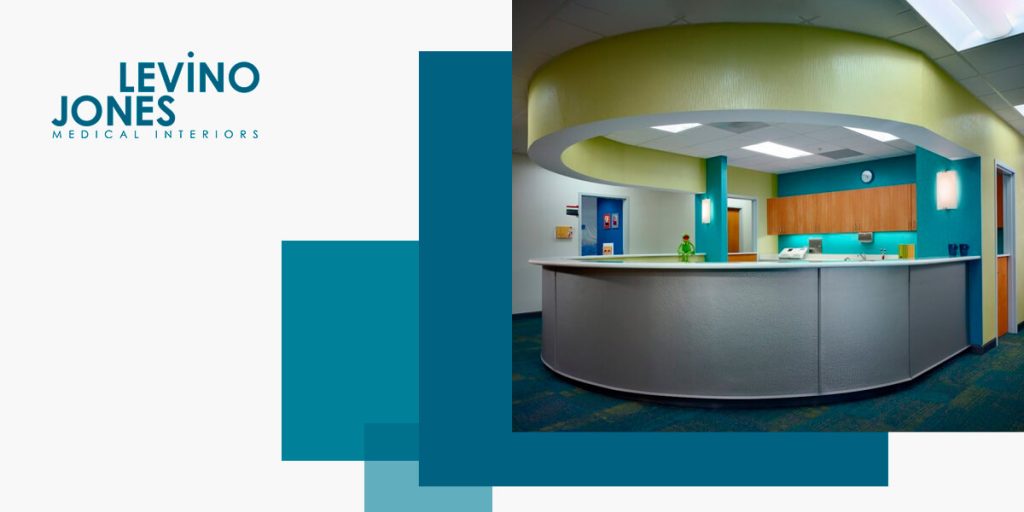
Space is a commodity in medical offices, giving patients more room to be seen and wait for their appointments. However, relocating to a larger office isn’t convenient or cost-effective for many practices. Instead, you can use interior design hacks to save space, allowing you to make the most of your existing office and increase patient comfort.
Below, you’ll learn more about how to save space in a medical office so you can boost staff efficiency, improve patient satisfaction and increase revenue.
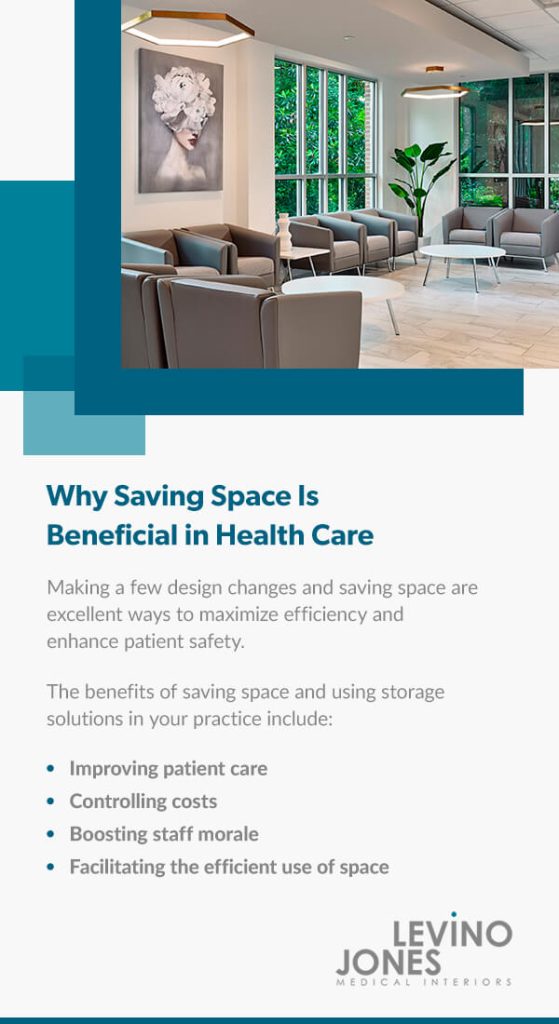
Health care design helps build a positive relationship between physicians and patients. Making a few design changes and saving space are excellent ways to maximize efficiency and enhance patient safety. A well-designed medical office can also make patients feel more comfortable in a health care setting where they might have some anxiety.
The physical space within a medical office can affect how a patient feels and interacts with medical professionals. Optimizing your space can help improve patient and physician engagement, satisfaction and efficiency.
The benefits of saving space and using storage solutions in your practice include:
While saving or creating more space in the health care industry is beneficial, it can be challenging for some facilities. Many health care organizations experience the challenge of expanding capacity due to population increases and community health concerns, such as the COVID-19 pandemic. As a result, health care leaders are driven to either expand their facilities or find ways to optimize their existing space.
One of the barriers that these facilities face is a lack of funds, making it challenging to find a balance between providing more room, the costs of expansion and maintaining existing space.
Despite all of this, there are still ways that you can save space within a medical office.
Saving space in a medical office helps boost the efficiency of workers, accommodate patients and reduce patient anxiety while they wait for their appointments. Below, you’ll learn how to maximize space with interior design so your practice can reap the benefits of improving your storage systems and increasing the available space within your business.
One way to maximize space in your medical office is to utilize virtual check-in apps. Rather than patients checking in at the counter, they can check in online or using your app, helping streamline appointments, shorten lines and save space in your waiting room.
A virtual waiting room allows patients to wait in their cars until an exam room is available. This technology helps prevent the spread of infection among patients and staff. You can also use these apps to update medical information, collect payments and ask for payer information. Apart from these benefits, these apps help clear up space in your waiting room, freeing up room and allowing you to do something else to optimize the space.
Windows are an excellent way to make a space seem larger since they add natural light to a room. Windows can also help calm patients and make them feel more comfortable in the area, giving them positive distractions during their appointment. Add windows to your waiting room and your exam rooms. If you choose to add these features to an exam room, remember to install blinds or curtains to ensure patients can have privacy during medical exams or tests.
Consider adding service windows between offices and waiting rooms or hallways, as well. These additions help reconfigure your spaces efficiently, connecting rooms that would otherwise be disjointed to save space.
Tucked-away displays are an excellent way to save space in a medical office. If you have standing displays, they could take up room you could otherwise utilize. Tucked-away displays go along walls or are placed in unused corners of your office, allowing you to use the space other displays might be taking. Use the resulting open space for other things, such as more seating for patients in a waiting room or more walking space for patients and physicians.
These displays allow you to showcase small, niche products that your medical practice offers. You can even use the storage space at the bottom of these displays as a lockable space for specific products or tools.
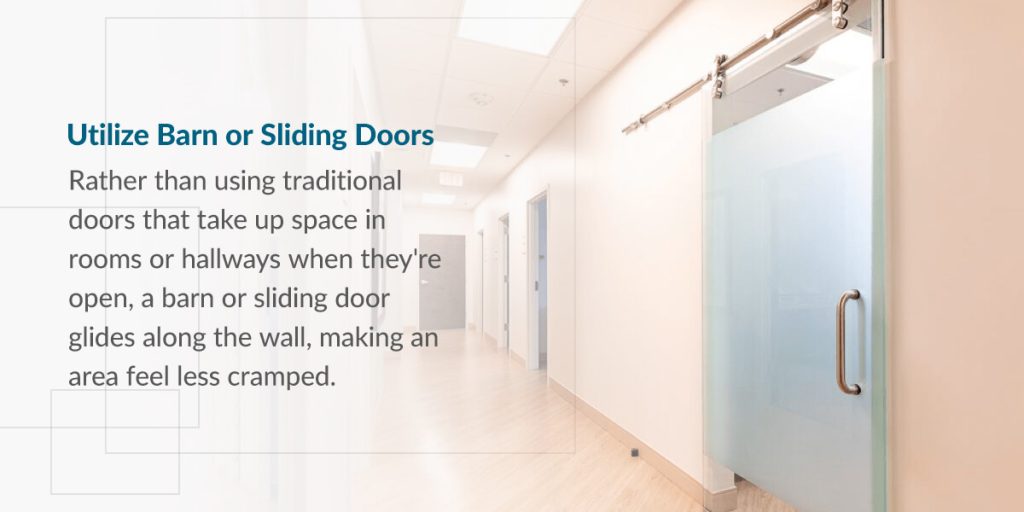
One way to open up more space in a medical office is by using a barn or sliding door. Rather than using traditional doors that take up space in rooms or hallways when they’re open, a barn or sliding door glides along the wall, making an area feel less cramped. These doors can also make a space more modern and comfortable for patients, helping them feel less anxious when they come in for their appointments.
You can also use these doors for staff break rooms because they easily slide away for simplified access. Close and secure these spaces during staff conferences or lunch hours.
Many medical offices have clutter, like paperwork and supplies sitting around that could be better sorted. If you have a small office space, a cluttered area out in the open can quickly feel overwhelming for physicians, staff and patients.
Rather than letting the office stay cluttered, clear your tables and walls of unused or old materials. You can move any essential items to a storage location. Decluttering your office can help the space feel larger and maximize staff efficiency and patient comfort.
Some medical offices have small exam rooms, and permanent technology and equipment can take up a lot of room. One way to maximize your space and improve efficiency is by using portable or maneuverable equipment. For example, you can mount monitors on exam room walls and use an extendable arm, allowing you to move it where you and the patient are comfortable during an appointment. Once the exam is over, you can move the monitor back to the wall, helping free up the space in the room.
You can also use portable stations, such as a vitals station with a blood pressure monitor, thermometer and pulse oximeter. Take the station around to exam rooms as patients are seen rather than having a designated area for vitals, allowing you to open up space for other applications, such as more seating, or free up a room or hallway space.
There are many ways you can incorporate portable or maneuverable technology and equipment into your practice. Determine what equipment would be beneficial to move around or have a portable alternative and try using them in your practice.
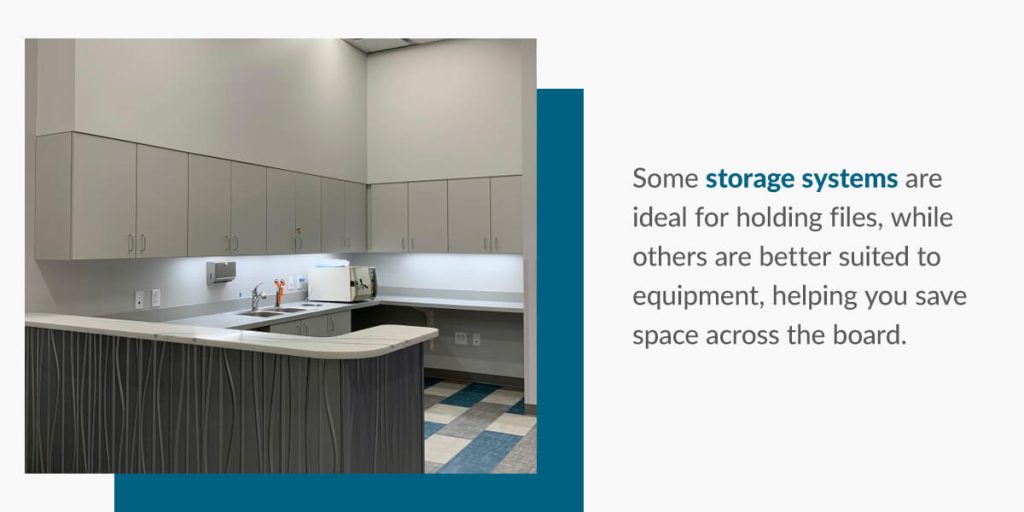
You have many options when choosing storage solutions for your medical practice. Some storage systems are ideal for holding files, while others are better suited to equipment, helping you save space across the board. Below are some of the options you have for storage in your medical office:
These are just a few of the many different storage options to help you save space in your medical office, helping boost efficiency and keep everything organized, so nothing becomes misplaced or lost.
Rearranging the furniture in an exam room can make the area feel more spacious and comfortable for patients. Some things you can consider reconfiguring in an exam room space include:
Anything you can do to make patients feel more comfortable and less cramped is a step in the right direction.
Another way to optimize your space is by redesigning your team stations. You could keep teamwork areas close to exam rooms to reduce the space they have to walk between tasks. Creating more opportunities for patients and staff to interact can improve outcomes and make patients feel well cared for.
Tight spaces, poor air quality, lack of daylight and dark color choices can make patients feel less comfortable in your medical office and increase anxiety. You can open up your space to help reduce stress, such as using windows to bring in more light, choosing positive and comforting colors in the design and swapping in slim yet comfortable furniture.
Positive distractions can also help reduce anxiety in patients, such as music, visual images and digital media. Choose soothing soundscapes as a way to relax patients while still saving space, since you’ll only need a small speaker system to get the job done. You can even use TVs, computers or radios you already have in your office to make the change and save space.
Medical practices maintain patient records for years, which can take up unnecessary space that could be used for other purposes. One way you could solve this problem is by using off-site document storage, helping free up space at your practice. Records management companies help you securely store your documents, using tracking and security to help you feel more comfortable storing critical documents off-site.
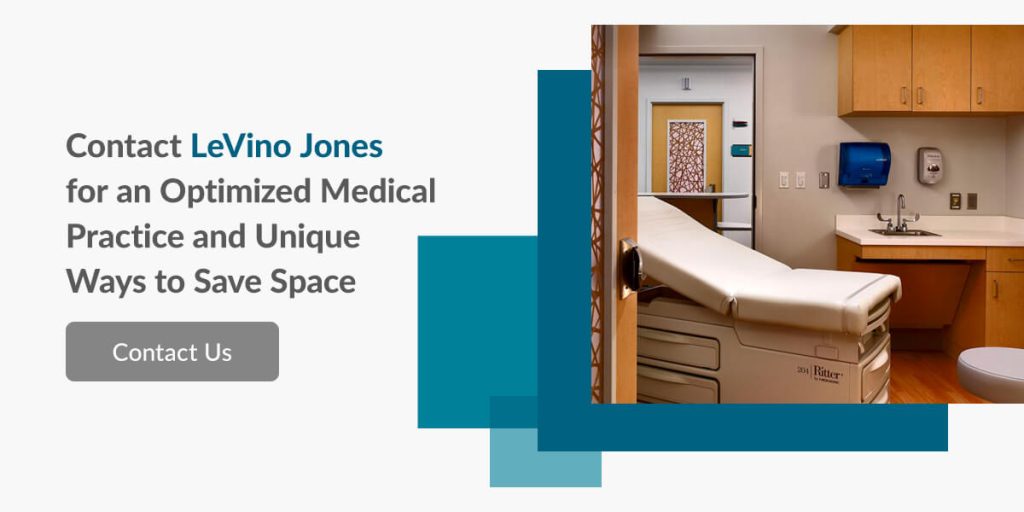
If you’re looking to save space in your medical practice, LeVino Jones is here to help. We offer floorplan and layout design services to help you optimize your offices. We understand the spatial needs of a medical facility, especially for facilities that have downsized, reorganized or expanded. We help you visualize your current and future setup to assist with construction and design processes.
We have a team of expert health care designers with experience in operational improvement and facility planning, helping you optimize your space. We’ll use creative solutions to improve underutilized space, maximize revenue and optimize patient care. Contact us today to learn more about our services and how we can help you save room in your medical practice!